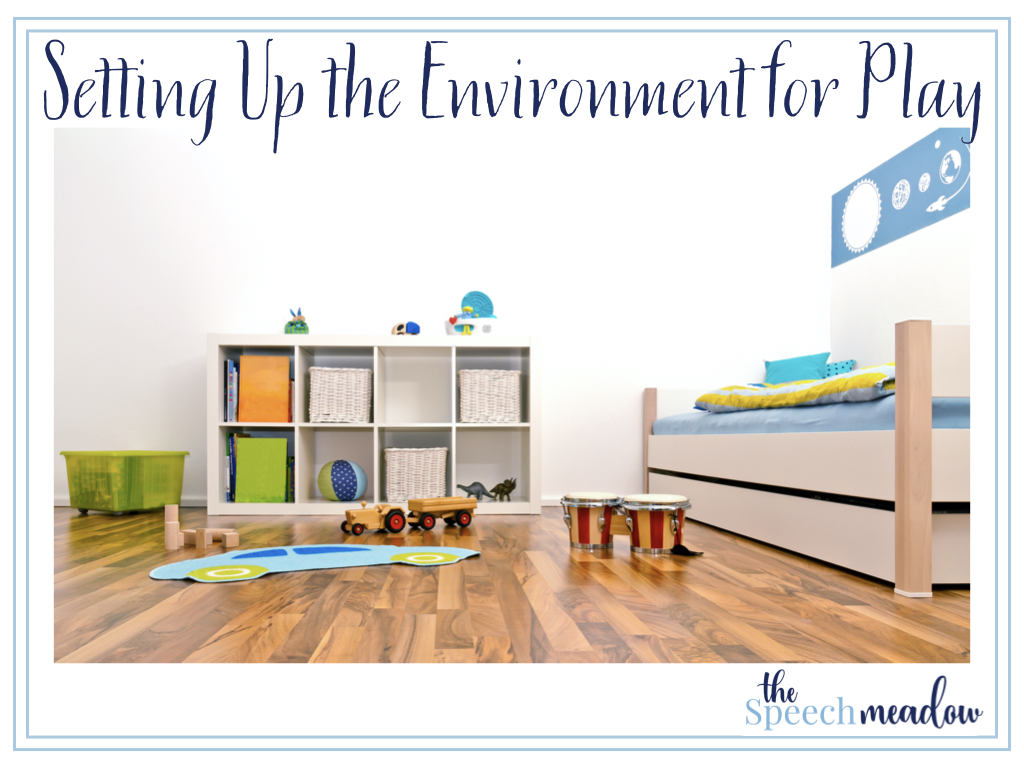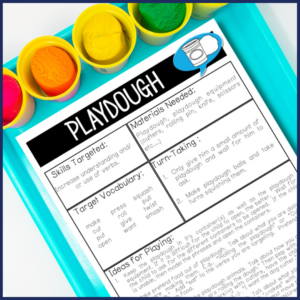Did you know that the environment is almost as important as the toys you choose. In previous blog posts, I have talked about how to use play to help improve language skills (go here for more information). This time I thought I would talk about how to set up the environment for play.

Limit Choices
It’s important to use toys, games, or activities that the child likes. The problem can be that if you have too many desirable toys out, children can become overwhelmed and not know what to play. This can lead to a meltdown or for children to flit from one toy to another. It’s complicated to plan how to play when there are so many toys for the child to pick.
Think about a couple of toys that the child likes to play with (for more information, go here). These toys should be ones that they want to play with but try to avoid toys that are so highly preferred that the child gets lost in the toy and tends to ignore the outside world. Put them out in front of the child and see which one they choose.
If you are playing people games (e.g., up/down, tickles, etc.), to give them choices, you can use pictures to represent the game or song. If you use the same images to represent the different games or songs so that the children learn to associate the picture with the specific activity. Another way you can help with making choices is to use your hands. When giving two options, use your hands to help with the decision. Say the first option, shake one hand. When saying another game, shake the other hand. Play the game that the child names or the hand that the child reaches.
If a child has difficulties making choices, then pick a preferred activity and a less preferred activity. This tends to make it easier to make choices. For more information on making choices, go here.
Remove distractions
Doing some simple actions such as turning off the TV, have siblings/adults use technology in another room can help children focus. Move pets to another place. Having a clean environment (e.g., non-target toys put away) can help the child focus on the toys you are playing.
Choose optimal times
Changing the environment can also mean changing the time you play. Pick times that the child can focus. E.g., if the child gets tired around 3 pm, then planning to play at 2:30 or later may not be the best time. If your child is napping, then generally playing after their nap would be a good time to play.
Setting up the right environment can be just as important as the toys you choose. For ideas on how to target different goals, check out the Come Play! book (click here). There are over 150 play ideas for developing language.
Happy playing!

